Unpacking chicken embryo development day by day. As spring nears closer, we are filled with the idea of warmer weather, flowers, and of course, bunnies and chicks walking around. No, we do not just mean for Easter decorations. We’re talking about live chicks.
One of the most amazing miracles we witness is the miracle of life, and chickens do not short us of this experience. A chicken’s ability to lay an egg that later turns into a chick is nothing but astonishing.
Read on to dive into a very (VERY) simplistic guide to embryology.
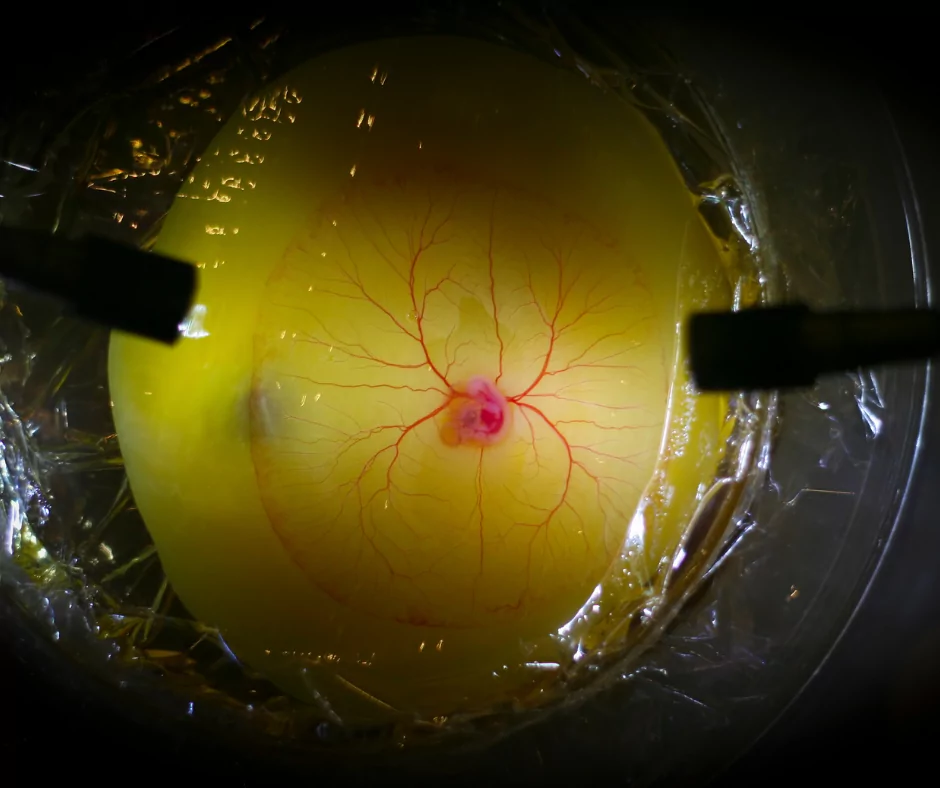
The Difference Between a Fertilized vs. an Unfertilized Egg
To start, there are crucial differences between a fertilized egg and an unfertilized one. Let’s first begin with the unfertilized egg. When we speak of these two terms, we are discussing the difference in appearance.
Inside the egg is what is known as an embryonic disc. For the unfertilized disc, the embryonic disc’s center has white material gathered in the middle. A fertilized egg’s embryonic disc appears as a ring. The center area will be lighter in color, and this is where the embryo is contained as it grows, sort of like a bullseye.
Let’s discuss quickly how a hen’s egg gets fertilized. A rooster does not impregnate a hen but rather fertilizes the eggs inside her. So yes, chickens do mate, and the hen’s egg is fertilized by sperm which exits the rooster’s cloaca.
The cloaca is the one exit and entrance hole that chickens have. For a hen, it’s where feces and eggs exit and where sperm enters. For the rooster, it is where sperm (which is stored inside the cloaca in the papilla) and feces exit.
Once a hen mates with a rooster, she can store the sperm in sperm pockets in her oviduct walls that can fertilize more eggs much later after mating. Therefore the hen may not need to remate for a long time.
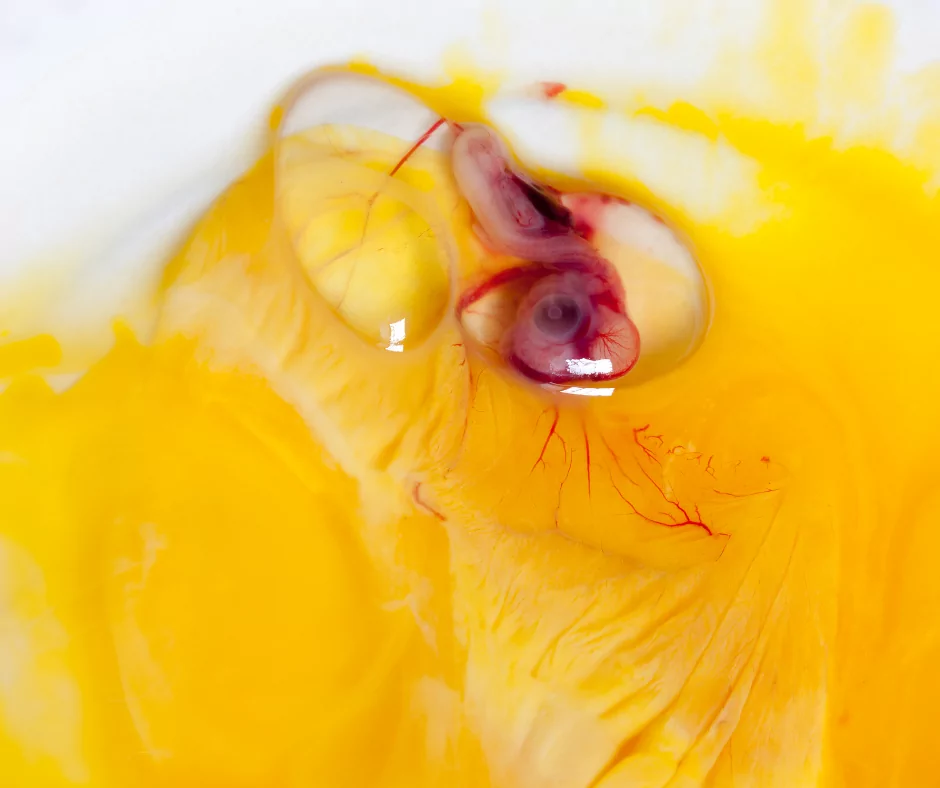
So you may be asking yourself, without cracking the egg (which will obviously not result in a chick), how can one tell if the egg is fertilized? Through a process called candling. This term came from using a lit candle to see inside the egg (you can also use a flashlight). In the beginning stages, the egg will be opaque (cloudy), and in later stages, you will actually see some veins and a developing embryo.
Chicken Embryo Development Day by Day Explained
In the beginning, as an egg is laid, some embryonic development has already taken place. This stops and will restart when the egg begins to incubate. Incubation is done by the hen laying or “brooding” on the eggs or by using an incubator.
An incubator is a machine that is used to mimic a hen laying on them. It keeps the eggs at optimal temperature and humidity. How long does it take for a chick to hatch? This is done over a 21 day incubation period.
Let’s now discuss what happens to the egg day by day:
Day One
Day one may seem boring, but a lot of action is going on inside the egg. The nervous system of the embryo is forming, as well as its alimentary canal.
Day Two
On day two, the vascular system begins forming from linked blood islands and the heart. Eventually, in later hours, they will join together.
Day Three
The blood vessels we mentioned above are now lengthening and becoming thicker and starting to circulate blood. The heart is also now beating, and the embryo is forming legs.
Day Four
Day four is a productive one. The brain is now divided into four parts, while the allantoic vesicle appears, allowing for respiration, calcium resorption, and waste storage. The eyes and tongue are beginning to form as well.

Day Five
On day five, the gender of the embryo is determined by forming the female or male sex organs.
Day Six
Chirping is starting to be made possible on day six by forming the beak, and movement can also occur at the will of the embryo. The vitelline membrane continues to develop, which is a structure that makes diffusion of water and nutrients possible. The eye, brain, and heart are much more prominent on day six.
Day Seven
Day seven marks the beginning formulation of the comb (the fleshy part on the chicken’s head that helps regulate temperature). The embryos’ neck is beginning to thin out so that the head and body are obviously separated.
Day Eight
On day eight, the brain is settled into its own cavity. The beak is now two separate parts (top and lower), and its legs and wings are now formed.
Day Nine
This embryo is starting to look like a chick on day nine with the formulation of feather follicles. Claws are also beginning to grow, and vascularization is increasing.
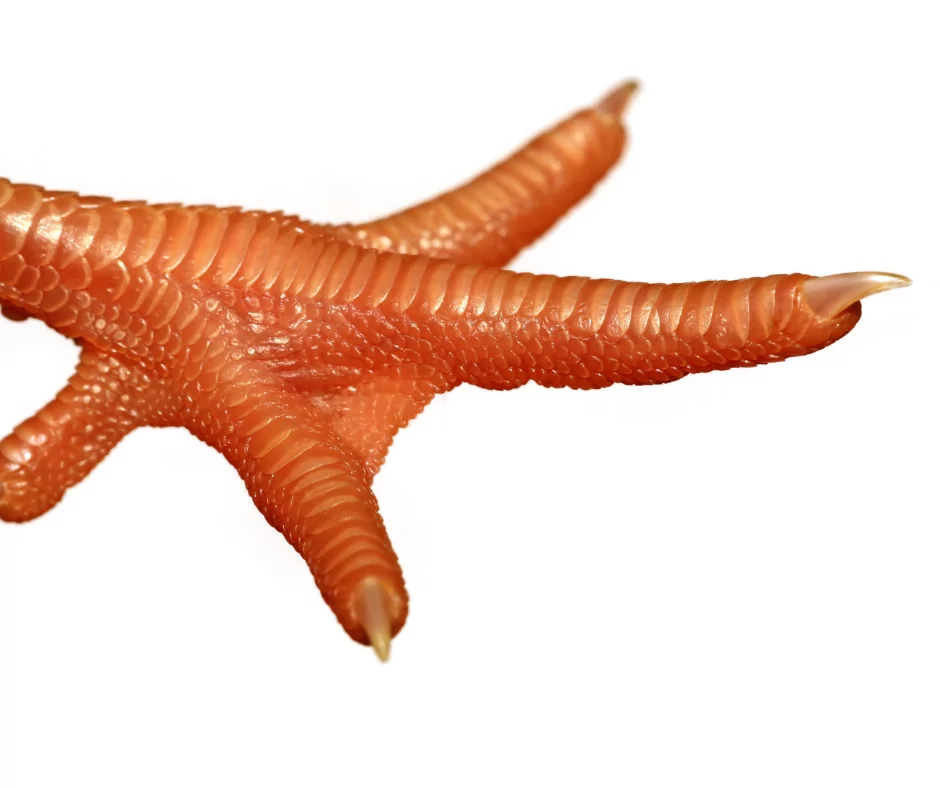
Day Ten
Day ten marks the beginning formation of the egg tooth. The egg tooth is a tiny membrane located on the top of the embryo/chick’s upper beak. It allows the chick to pierce through the air sac before the chick hatches. After hatching, it is absorbed by the beak or falls off.
Day Eleven
Tail feathers appear on day eleven, as well as a more prominent comb. Eyelids are beginning to cover the embryo’s eyes, and the allantois has reached its maximum size.
Day Twelve
Toes have fully formed on day twelve.
Day Thirteen
The chorio-allantoic membrane begins on day thirteen, as well as scales that start to cover the toes and legs of the embryo.
Day Fourteen
The embryo begins to turn so that it is optimal to hatch, and down (the cute fluffy hair on a chick) begins to cover the embryo’s body.
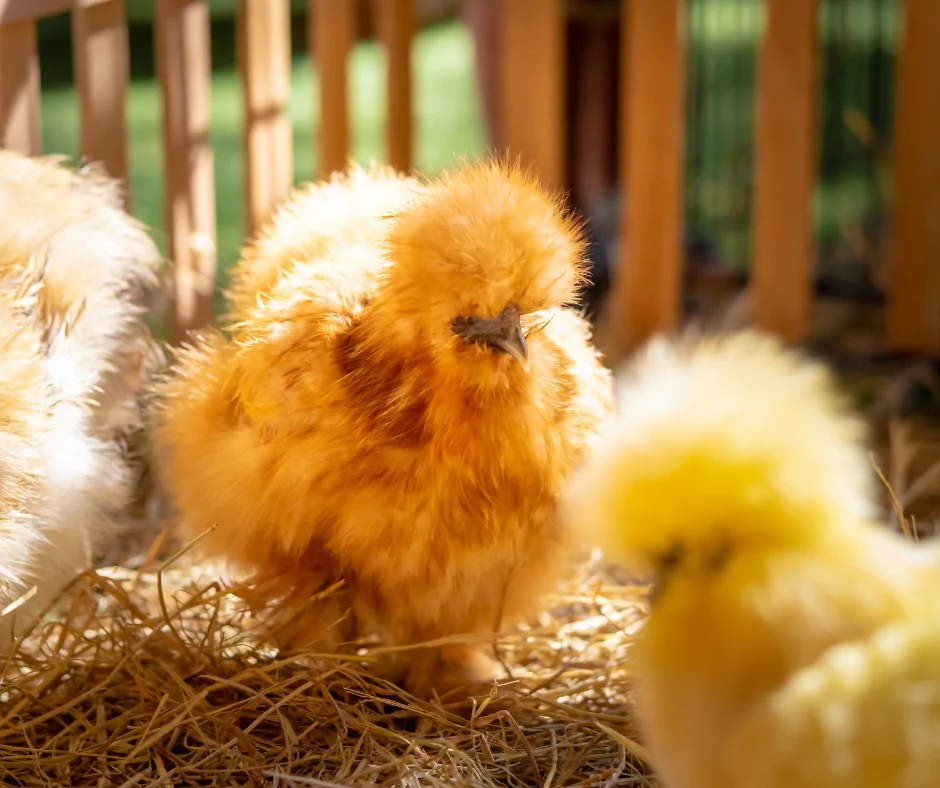
Day Fifteen
The piping position begins, which is when the embryo positions its head under its right wing. This allows for the beak to point towards the membrane that it will later break. Down is continuing to grow and cover the embryo’s body.
Day Sixteen
The egg may look black upon candling on day sixteen. This color change is occurring because the albumen (the egg white) is being reabsorbed.
Day Seventeen
The albumen is fully absorbed on day seventeen, and the embryo’s renal system can now produce urates. Chickens eliminate waste from the urinary system in the product of urates, which appear as a white cap on the feces.
Day Eighteen
On day eighteen, the vitellus (egg yolk) begins to be absorbed, and the amniotic fluid appears to be reduced.

Day Nineteen
The beak is in the position of the internal pip. Internally piping is when the beak breaks the inner membrane and begins lung ventilation in the air cell. The air cell is a membrane underneath the shell that is filled with oxygen. The embryo uses this oxygen as it is developing.
Day Twenty
The chick, at this point, will break the internal membrane and begin breathing air, and the remaining vitellus is absorbed. External piping may occur, which is when the chick will break through the outer shell, allowing them to breathe air.
Day Twenty-one
The chick begins to turn and break through the outer shell. This process is known as zipping. The chick will break through the top of the shell until they are completely out. Then they will stay in the incubator a while longer to dry.
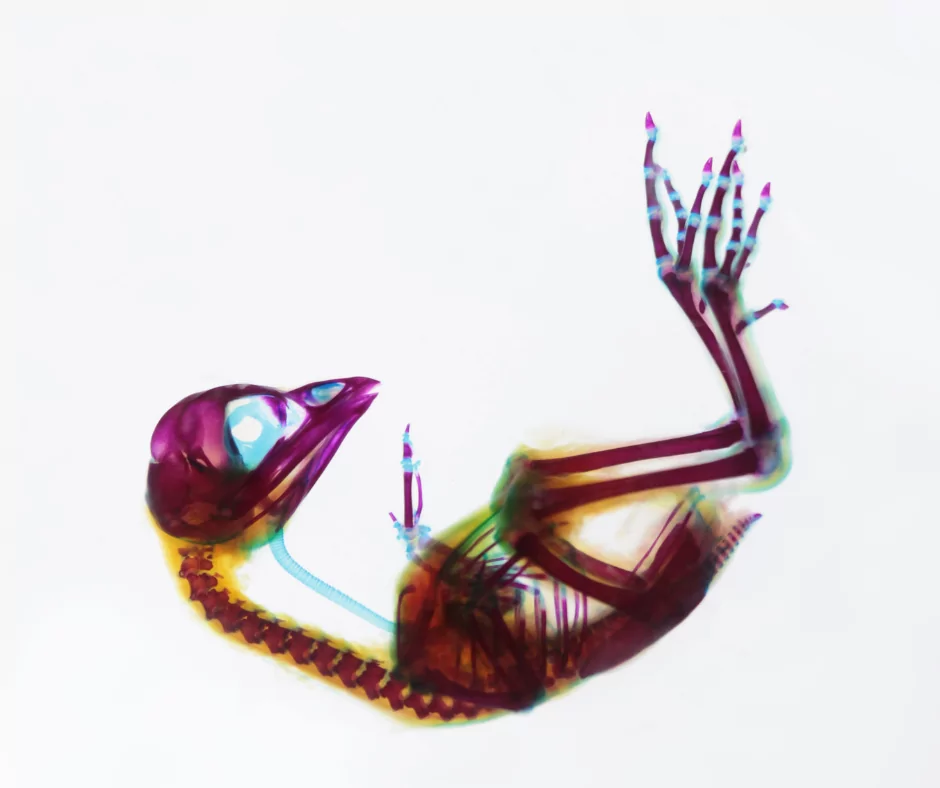
Summary
Chickens are unique in so many ways. One of the most remarkable traits about them is their egg-laying ability. Eggs come in many different colors, shapes and pop out the cutest little chicks.
Their process from embryo to chick happens quickly, making the development that more impressive.
From day one until hatching! Watch this video if you want a visual explanation of every day of chick embryo development. Understand the steps in the development better and know how it happens in the egg. Great video for students taking Poultry, Reproduction, Embryology as subjects during their studies.
If you liked this article you can also read our other piece on animal gestational periods.
